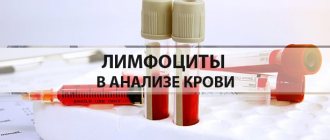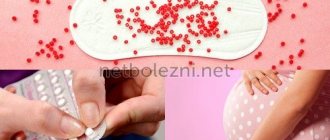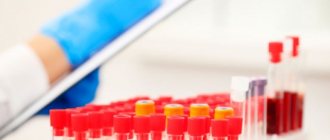Hemoglobin level is an important indicator of a man’s health, and its decrease is a good reason to see a doctor. After all, this protein performs a number of vital functions, including ensuring tissue respiration. Therefore, when its concentration in the blood decreases, changes in well-being of varying degrees occur, and in severe cases, low hemoglobin can cause the development of serious complications.
What is hemoglobin
Hemoglobin is a complex protein containing iron. Its main task is to add oxygen diffusing into the blood from the lungs and distribute it throughout the body. Giving oxygen to cells, hemoglobin attaches carbon dioxide formed by them in the process of vital activity. Then getting through the bloodstream to the lungs, it gives it away, again making room for oxygen. This is how gas exchange and tissue respiration occur. But, in addition, hemoglobin is involved in maintaining the acid-base balance, in DNA synthesis, and in the occurrence of a number of redox reactions.
To synthesize hemoglobin, the body uses iron, which comes from food and accumulates in the form of ferritin in the liver, lungs, and spleen. There is also a small amount of iron present in the intestinal mucosa. If the diet does not meet the body's iron needs, ferritin is activated. This helps maintain normal hemoglobin levels and organ function. But with prolonged deficiency, its reserves are depleted, and the concentration of hemoglobin decreases.
In men, critically low hemoglobin levels are rare, since they, unlike women, do not experience regular physiological bleeding. For the same reason, the increase in hemoglobin in men occurs faster and more effectively. But if left untreated, there is a serious risk of complications, especially if you have bad habits:
- thrombosis;
- myocardial infarction;
- stroke;
- decreased immunity;
- deterioration of cognitive functions (memory, attention);
- hypoxic coma.
Often, when low hemoglobin persists for a long time, the presence of chronic fatigue syndrome is observed.
Hemoglobin level in women during menstruation
During the menstrual period, protein content decreases sharply. This feature of the female body is associated with loss of blood fluid and is not a sign of pathology. It is for this reason that women feel unstable during menstruation:
- dizziness occurs (about other causes of dizziness here);
- appetite increases;
- there is a persistent feeling of fatigue, etc.
At the same time, experts recommend refraining from taking blood tests a few days before/after menstruation, as the information will be distorted. The normal level of hemoglobin after menstruation is restored within 2 – 3 days (with correct nutrition and lifestyle).
Reasons for decreased hemoglobin levels
The main reasons for a decrease in hemoglobin levels in the blood in men are:
- reduction in the amount of iron entering the body;
- disturbances in the absorption and transport of iron throughout the body;
- a decrease in the number of red blood cells as a result of a violation of their production by the bone marrow or a shortening of life due to various circumstances.
In this case, most often a decrease in hemoglobin is due to iron deficiency in the body. The fact is that the absorption of this microelement from food is limited. Even with proper nutrition, no more than 1-1.5 mg can be absorbed per day, and if there are errors in the diet, the amount of iron entering the body cannot cover the need for it. In such cases, iron depots in the form of ferritin are used to maintain normal life functions. But its reserves are limited, and therefore, when they are depleted, the intensity of bone marrow erythropoiesis decreases. As a result, the number of red blood cells, as well as the level of hemoglobin, decrease, which indicates the development of anemia and is accompanied by the appearance of characteristic symptoms.
Thus, the causes of low hemoglobin in men can be:
- malnutrition;
- insufficient consumption of foods that are sources of iron:
- adherence to a vegetarian diet;
- diseases of the gastrointestinal tract;
- severe bleeding during injuries, operations, including hidden ones (observed with peptic ulcers of the stomach and duodenum, kidney pathologies, pulmonary siderosis, etc.);
- haemorrhoids;
- malignant tumors;
- chronic intoxication;
- vasculitis;
- systemic scleroderma;
- systemic lupus erythematosus;
- helminthiasis;
- cystic fibrosis;
- rheumatoid arthritis, etc.
Statistics show that men are more likely than women to have gastrointestinal diseases caused by Helicobacter pillory, which leads to impaired absorption of iron in the intestines and a decrease in hemoglobin.
Table of hemoglobin norms in the blood of women by age
Women experience many different hormonal changes throughout their lives, which are treated by an endocrinologist. They may be associated with physical overexertion, frequent stress, pregnancy, menstruation or menopause. For these reasons, enzyme concentrations may vary throughout the month and do not indicate the presence of any pathological processes in the body. In addition, depending on the age of the patient, protein levels will also vary.
Nowadays you can find a lot of information on the Internet regarding the norms of various blood parameters, including hemoglobin. The figures indicated there are far from the real situation. The medical guidelines used by doctors indicate clear ranges - the minimum and maximum of each indicator. There is "from and to" for all ages. To treat the patient and determine the further prognosis. For hemoglobin, both the upper and lower limits of normal are important
The standard hemoglobin level in women varies from 120 to 150 g/l. You can evaluate the results of the analyzes by checking the indicated values with the tabular data.
Hemoglobin norm in women - table by age:
| Woman's age | Hemoglobin norm, g/l. |
| 17 — 20 | 120 — 150 |
| 21 — 30 | 120 — 150 |
| 31 — 40 | 120 — 145 |
| 41 — 50 | 120 — 140 |
| 51 — 60 | 120 — 140 |
| 61 — 65 | 120 — 140 |
| more than 65 | 120 — 150 |
Normal hemoglobin level in women aged 30–40 years
The norm at 40 years is at its highest level, after which it gradually begins to decline. Such modifications are associated with hormonal changes in the body that begin to occur during this period. The process of minimizing the concentration of the enzyme in the blood continues throughout subsequent years. Compared to thirty-year-old women, at 40 years old the protein content decreases by 5 g/l.
Normal after 50 years
After 50 years, the norm of hemoglobin in the blood of women decreases noticeably . These modifications can be clearly seen in the table; the indicated indicators do not correspond to normal values. Such disorders are associated with hormonal and emotional instability. Women at this age are susceptible to depression, various experiences) and quickly get tired even with minimal physical exertion (the help of a psychologist can help cope with such conditions.
Normal for women after 60
As indicated in the table, the hemoglobin level in women after 60 years of age becomes critical. This situation is associated with the end of menopausal changes and the minimization of metabolic processes in the body. Hemoglobin in women after 65 years of age has critical indicators, as internal metabolism in tissues slows down.
Symptoms
The severity of symptoms largely depends on the level of hemoglobin: the lower it is, the more severe the anemia. Therefore, in mild cases, men may not notice changes in their well-being or not attach importance to them, since they are little expressed. In such situations, periodic weakness or increased fatigue may occur, but many attribute this to stress, age and other life circumstances. With a further decrease in hemoglobin, the situation becomes more complicated, the existing symptoms become more intense, and others appear.
Sometimes even a decrease in hemoglobin to 90 g/l is asymptomatic.
In general, a decrease in hemoglobin levels in men may appear:
- drowsiness, weakness, decreased performance;
- shortness of breath, which initially occurs due to physical exertion;
- feeling of heartbeat;
- dizziness that can lead to loss of consciousness;
- pallor of the skin and mucous membranes;
- increased irritability, aggressiveness;
- headaches of varying degrees of intensity;
- decreased appetite;
- increased brittleness of nails, the appearance of white spots and bumps on them;
- perversion of taste preferences with the emergence of a desire to eat inedible food, in particular raw meat, chalk, clay;
- developing an addiction to the smells of acetone, gasoline, perfume, etc.;
- ringing in the ears, flickering of spots before the eyes.
A symptom of decreased hemoglobin that is typical for men may be impaired erectile function.
High hemoglobin: causes, treatment
If hemoglobin levels in the blood exceed the norm indicated in the table, then this condition is also a reason to consult a doctor. In this case, the patient may have symptoms such as:
- problems in the functioning of the genitourinary system;
- drowsiness;
- yellowish skin;
- poor appetite;
- decreased vision;
- oncology;
- chronic heart failure;
- high fatigue.
The reasons for such a violation include:
- diabetes mellitus (the disease is treated by an endocrinologist);
- increased blood viscosity;
- erythrocytosis;
- excess vitamin B12/B9;
- chronic obstructive pulmonary diseases.
Diagnostics
If the symptoms described above appear, especially if this is accompanied by the presence of factors predisposing to a decrease in hemoglobin, you should take a general blood test and consult a physician with its results. To confirm anemia, a repeat clinical blood test is usually prescribed. This eliminates the possibility of mistakes being made in the laboratory.
If a decrease in hemoglobin levels is confirmed, treatment for anemia is immediately prescribed. And in parallel with this, a comprehensive examination of the body is carried out in order to identify the causes of its development. This is especially important in cases where there are no obvious prerequisites for this, for example, having undergone surgery in the recent past, injuries with large blood loss, etc. For this, the following may be prescribed:
- blood chemistry;
- stool test for occult blood;
- colonoscopy;
- fibrogastroduodenoscopy;
- Ultrasound of the abdominal organs and kidneys.
How to increase low hemoglobin
Even a slight decrease in hemoglobin levels requires treatment. Otherwise, the man’s well-being will progressively deteriorate. Therefore, from the moment a general blood test is performed and low hemoglobin levels are established, it is necessary to make adjustments to the daily diet and start taking iron-containing medications. It is impossible to cope with the problem only by changing the diet and increasing the amount of iron sources in the body, since at best, as much of this trace element is absorbed from food per day as is consumed. This will not allow the formation of the necessary depots and eliminate the risk of re-development of anemia in the near future.
It is imperative that in combination with the treatment of anemia, therapy for the disease that provoked its development is prescribed. Accordingly, it will be strictly specific in each individual case.
Nutrition correction
With low hemoglobin, men are advised to increase the amount of iron-rich foods in the daily menu, as well as those containing folic acid, vitamin B12 and ascorbic acid, as they increase the quality of its absorption. These include:
- beef tongue, liver;
- white chicken, turkey, veal;
- various seafood, as well as red and black caviar;
- buckwheat, rice;
- leafy greens, cabbage, broccoli, green beans, spinach;
- legumes;
- pumpkin, tomatoes, beets;
- berries, especially black currants, blueberries, cranberries;
- fruits, in particular pomegranate, persimmon, dried apricots;
- peanut.
But when drawing up a menu, it is worth taking into account the peculiarities of iron absorption. So, you should not combine meat dishes with pasta, bread and cereals. They are recommended to be consumed with vegetable side dishes. It is also necessary to consume fermented milk products and nuts separately from other meals.
How to increase hemoglobin in the blood
It is important to control the ratio of all components of the blood fluid. Since its minimization is a pathological condition that will require certain treatment, and it does not always go away quickly and successfully. As therapy, doctors can take measures such as:
- blood transfusion (used in extreme cases, when the level is greatly reduced and drug treatment fails);
- prescription of vitamins (B9 and B12);
- taking iron-containing medications (in the form of tablets, suspensions or injections);
- drawing up a special menu (iron-enriched foods are added to the diet - meat, liver, herbs, vegetables, buckwheat, dried fruits, seafood, chocolate, etc.)
Therapy to increase hemoglobin levels in the blood is prescribed by a doctor during a personal appointment or online consultation. You can consult online or consult with a service doctor.








